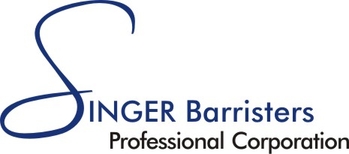Like a good concert, a successful CPD leaves its audience yearning for more. Ontario Paralegal Network’s Oct. 26 session, “Raising the Bar” gave its audience a symphony of information, with plenty of room for encores.
Presented through CPD On-Time and supported by Tripemco Burlington Insurance, the event at the Centre for Health & Safety Innovation delivered a wide range of paralegal-specific information, presented by leaders in the legal community. The interplay between statute and common law weaved through each section, tying together the papers, case law and examples quoted.
Facilitated by paralegal Susan Koprich, the day-long Raising the Bar Substantially CPD started with an overview of contract law, including formation, types, exceptions, interpretation, available remedies, and enforcement. Deputy Judge J. Sebastian Winny and paralegal Hugh Ferguson detailed many of the contractual issues that paralegals encounter within the scope of practice.
In determining the enforceability of clauses in cases of breach of contract, “The court loves ‘nuanced arguments,’” Deputy Judge Winny said. “As advocates, this means we have more work to do,” in assisting courts to interpret “grey areas” in favour of the client.
Ferguson noted that paralegals should know the case law that relates to a case, so they are prepared to address any questions the court may have.
Real estate-related contractual issues came up in the contracts session, and in Former Deputy Judge Winer’s presentation on the doctrine of merger. He presented a case study on finality in contracts.
Former Deputy Judge Allan Mintz presented a lively look at mediation. Paralegals can represent clients during mediation. The option can save time, money and relationships, Mintz said. “One day of mediation is cheaper than a three-day trial” and can provide a useful peek at the strengths and weaknesses of both sides’ positions.
Paralegal and legal student, Stanley Razenberg, and lawyer, Darryl Singer, tag-teamed their presentation on the interplay between Statutory Accident Benefits and tort claims related to accidents. This highly technical field is heavy on management — not just of the case, but of limitation periods and client management. “Client management is 80 per cent of what we do,” Singer said.
Ethical issues came up during presentations, in addition to Paralegal Society of Ontario President, John Tzanis’ presentation. Duty to the client, rules around referral fees, scope of practice limitations, contingency fees and the need to communicate appropriately with clients, were among the Rules-related topics raised.
David Mayzel and Deputy Judge Harry Perlis used a “town hall” style to generate audience participation for their presentation on remedial legislation — acts such as the Construction Lien Act, Consumer Protection Act and Repair and Storage Liens Act. Paralegals can leverage sections of such “remedial legislation” in small claims actions.
As with contract-based claims, paralegals can use alternative pleadings for matters that touch on trust money and other issues covered by remedial acts. Statutes and regulations can create a maze that legal service providers must unravel, Mayzel said. To effectively represent clients, paralegals must understand the enabling statutes and their regulations, and review leading cases, and then construct pleadings that address both statute and common law.
Cases referenced in Raising the Bar include:
Action Auto Leasing v. Cantlon, 2013 ONSC 6312 (CanLII)
Consolidated-Bathurst v. Mutual Boiler, 1979 CanLII 10 (SCC), [1980] 1 SCR 888
Grover v. Hodgins, 2011 ONCA 72 (CanLII)
Hi-Tech Group Inc. v. Sears Canada Inc., 2001 CanLII 24049 (ON CA)
McGrath v. MacLean et al., 1979 CanLII 1691 (ON CA)
Whilby v. Redhead, 2010 ONSC 2420 (CanLII)
by Elizabeth Published on Paralegal Scope Magazine
